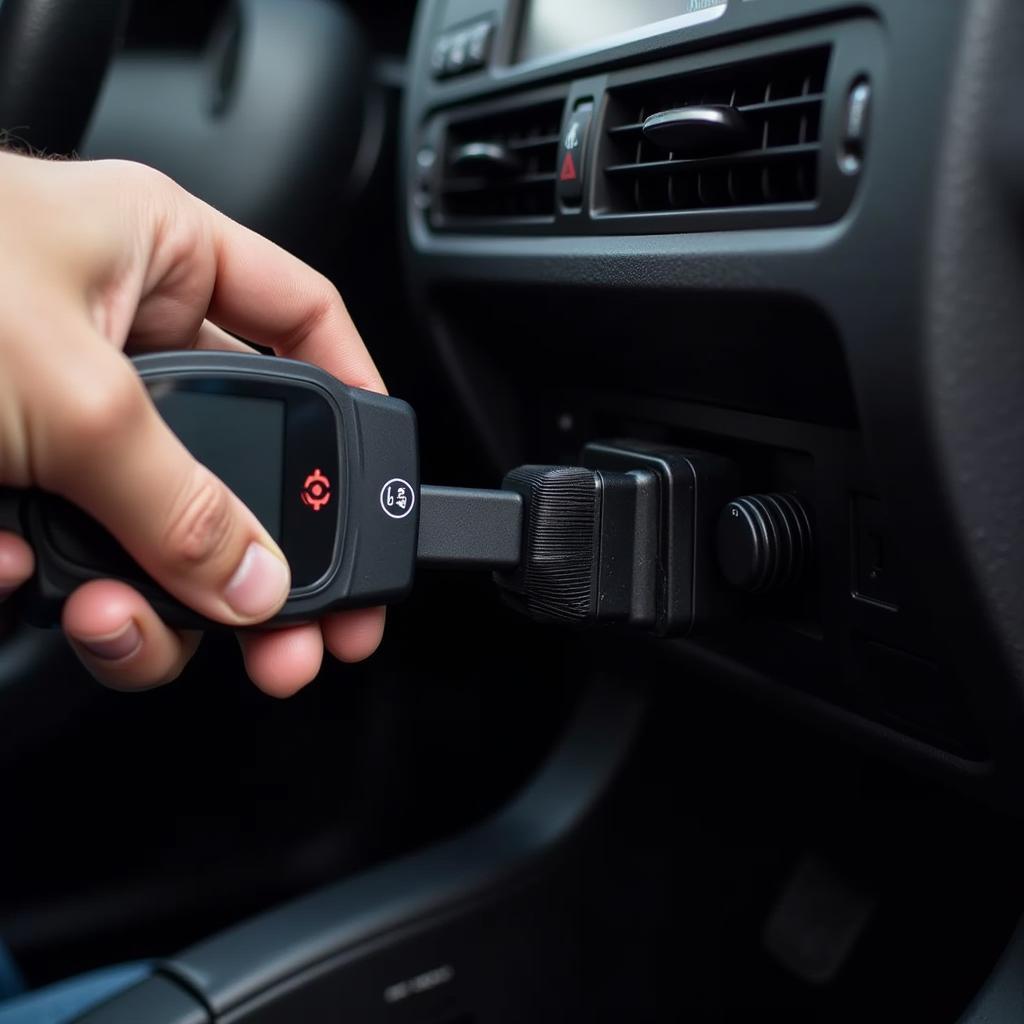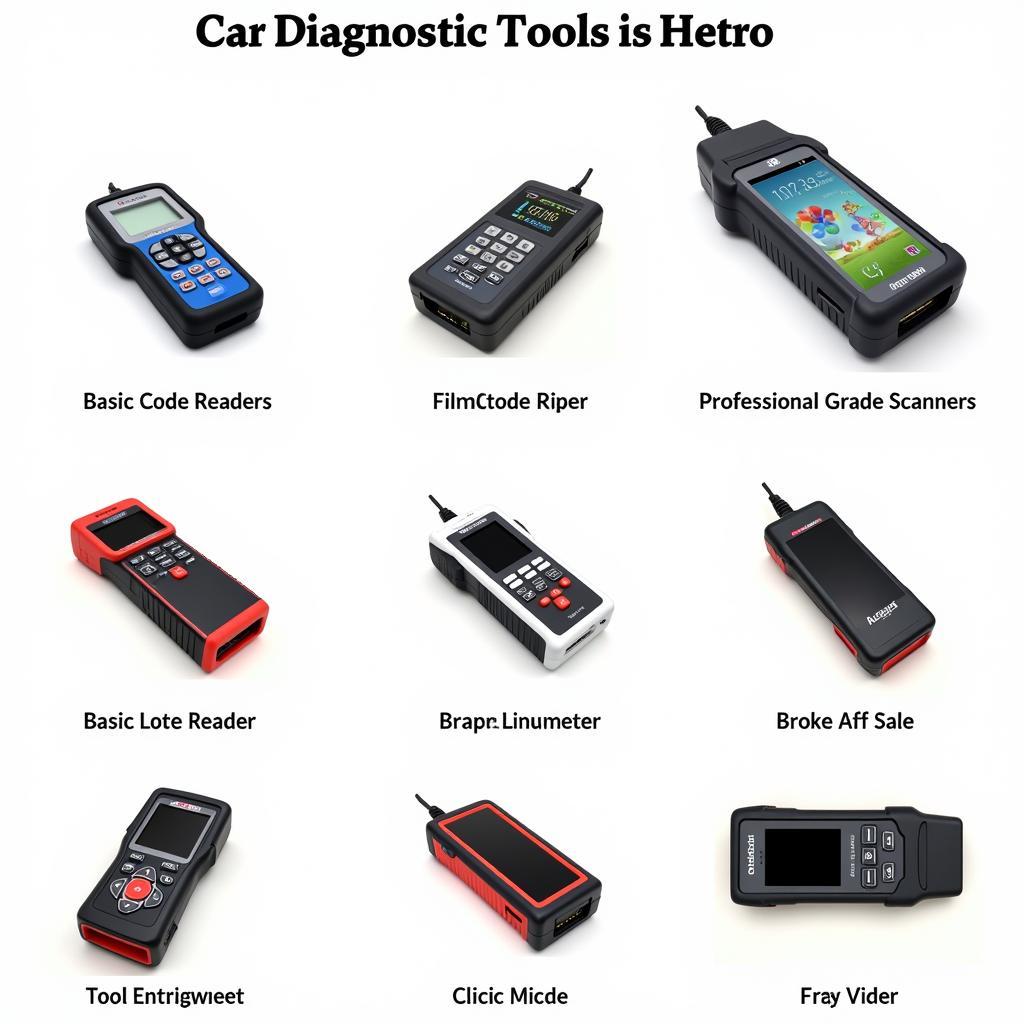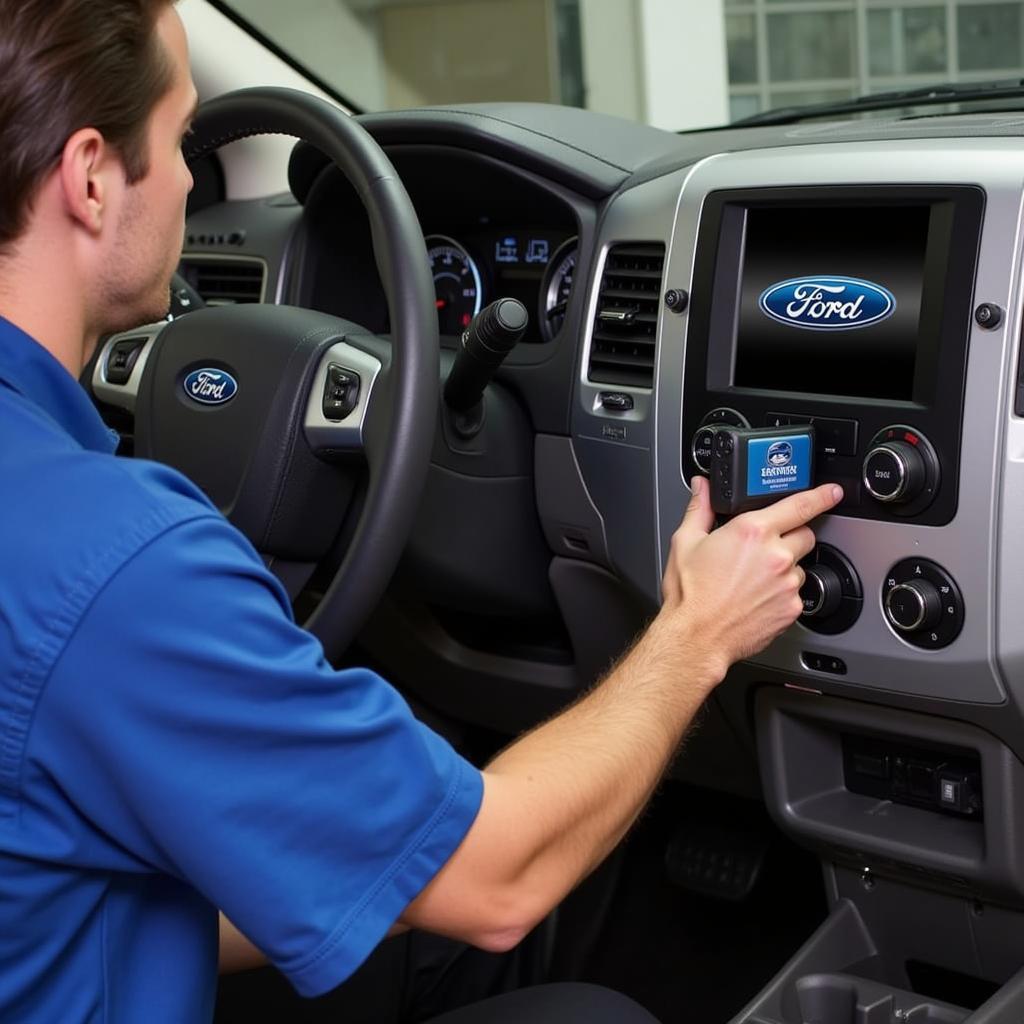A flashing check engine light can induce panic in any car owner. Is it a minor glitch or a major engine malfunction? Instead of stressing over the unknown, equip yourself with the Best Check Engine Diagnostic Tool. These handy devices plug into your car’s OBD-II port, acting as a direct line to your vehicle’s brain. No more expensive mechanic visits for a simple code reading!
 Car diagnostic tool connected to a car's OBD-II port
Car diagnostic tool connected to a car's OBD-II port
Understanding the Power of a Check Engine Diagnostic Tool
Gone are the days of relying solely on mechanics to decipher the cryptic codes thrown by your car. A check engine diagnostic tool empowers you to:
- Read and Understand Diagnostic Trouble Codes (DTCs): Decipher those confusing codes, understand the severity of the issue, and get a clear explanation of what’s going wrong.
- Reset the Check Engine Light: After addressing the issue, easily reset the light yourself, saving you a trip to the mechanic.
- Monitor Live Data Stream: Get real-time insights into your engine’s performance, including RPM, speed, coolant temperature, and more, helping you identify potential problems early on.
- Perform Advanced Functions (on some models): Certain advanced tools allow you to access manufacturer-specific codes, conduct component tests, and even program new keys.
Choosing the Right Check Engine Diagnostic Tool: A Buyer’s Guide
Navigating the world of diagnostic tools can feel overwhelming, but it doesn’t have to be. Consider these key factors:
1. Your Budget and Needs
- Basic Code Readers: Ideal for DIYers on a budget, these affordable tools read and clear basic DTCs.
- Mid-Range Scanners: Offer more features like live data streaming, freeze frame data, and some advanced functions, striking a balance between price and capability.
- Professional-Grade Scanners: Packed with features like bi-directional control, advanced coding, and access to manufacturer-specific information, these are best suited for professional mechanics or serious DIY enthusiasts.
 Various types of check engine diagnostic tools
Various types of check engine diagnostic tools
2. Vehicle Compatibility
Ensure the tool you choose is compatible with your car’s make, model, and year. Most modern vehicles use the standard OBD-II port, but older models may require specific adapters.
3. User-Friendliness
Opt for a tool with an intuitive interface, clear instructions, and easy-to-navigate menus. Look for features like a backlit display, color screen, and ergonomic design for enhanced usability.
4. Additional Features
Consider features that enhance your diagnostic experience:
- Wireless Connectivity: Bluetooth or WiFi connectivity allows you to easily share data with your smartphone or laptop for further analysis.
- Software Updates: Regular software updates ensure your tool stays compatible with the latest vehicle models and includes the most up-to-date information.
- Data Logging and Reporting: This feature is useful for tracking issues over time or sharing detailed reports with your mechanic.
“Investing in a reliable diagnostic tool is like having an X-ray vision for your car,” says John Smith, Senior Automotive Engineer at ScanToolUS. “It empowers car owners to understand their vehicles better and make informed decisions about repairs.”
Best DIY Car Diagnostic Tool for Audi: Unlocking the Secrets of Your Audi
Maximizing Your Diagnostic Tool: Tips and Tricks
- Read the Manual: Familiarize yourself with your tool’s features and functionalities before using it.
- Start with the Basics: Begin by reading and understanding the DTCs before diving into more advanced features.
- Clear Codes After Repairs: After fixing the issue, clear the codes to confirm the problem is resolved.
- Keep Records: Maintain a log of DTCs, repairs, and maintenance performed to track your car’s health over time.
Conclusion
A check engine light doesn’t have to be a source of anxiety. With the best check engine diagnostic tool at your disposal, you can diagnose problems early, avoid unnecessary mechanic visits, and save money in the long run. Empower yourself with knowledge and take control of your car’s health today!
Need expert advice on choosing the right diagnostic tool? Contact ScanToolUS at +1 (641) 206-8880 or visit our office at 1615 S Laramie Ave, Cicero, IL 60804, USA.
FAQs
1. Will a check engine diagnostic tool work on any car?
Most modern vehicles (1996 and newer) are equipped with the standard OBD-II port, which these tools use. However, compatibility can vary depending on the make and model.
2. Can I fix my car myself using a diagnostic tool?
While these tools help identify problems, they don’t provide repair instructions. They empower you with information to understand the issue and seek appropriate repairs.
3. How often should I use a check engine diagnostic tool?
It’s a good practice to scan your vehicle periodically, even if there are no warning lights, to catch potential problems early.
4. GMC Yukon Diagnostic Tool: Everything You Need to Know
5. What’s the difference between a code reader and a scanner?
Code readers simply read and clear basic DTCs, while scanners offer additional features like live data streaming and more advanced functions.


